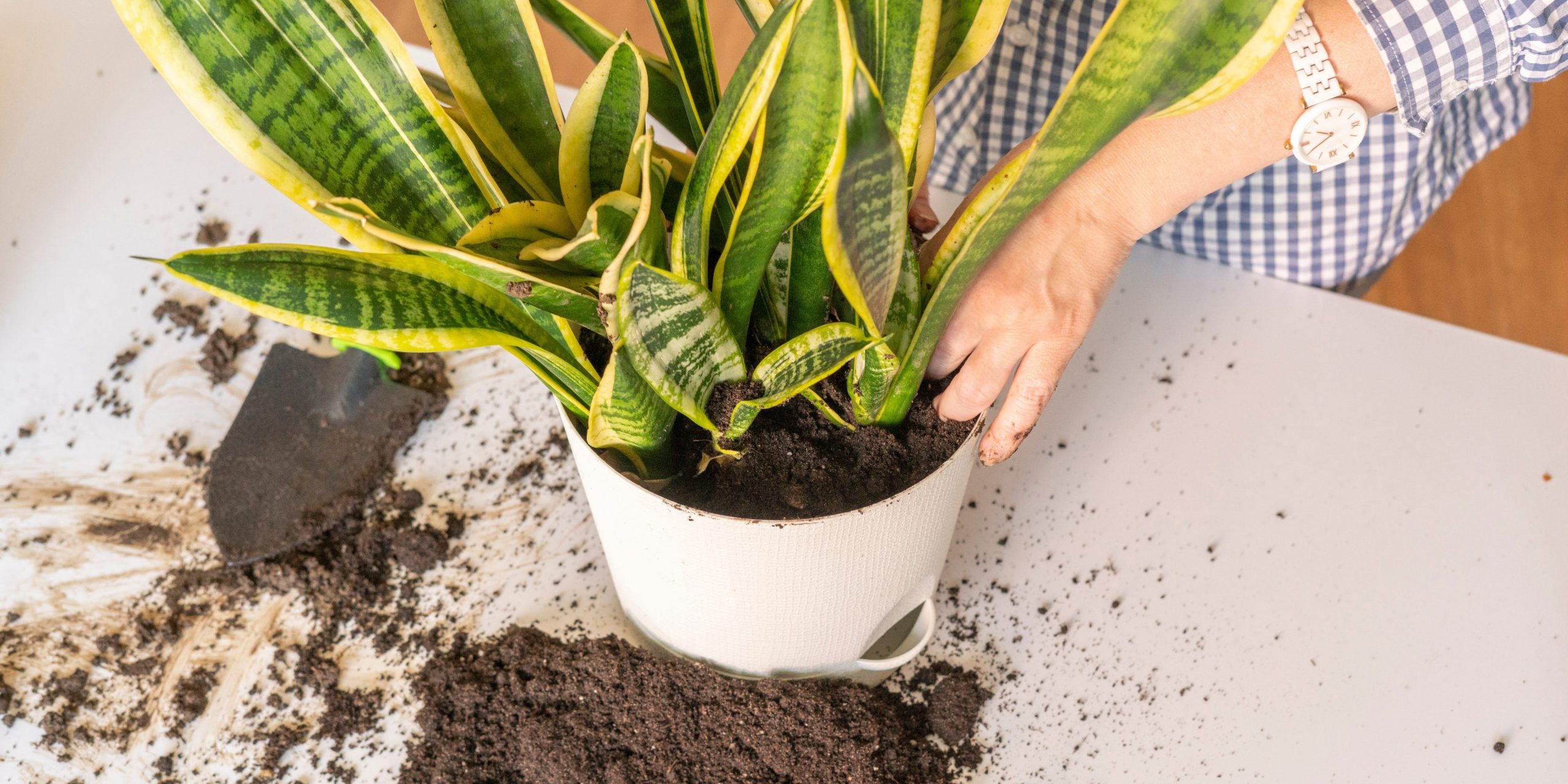
Михаил Руденко/Getty Images
- There are three main methods that you can use to create a new snake plant from an existing one.
- Using the right potting soil and planter are keys to successful propagation.
- Ground cinnamon — a natural anti-fungal — can speed up the healing of cuttings.
- Visit Insider’s homepage for more stories.
Snake plants (Dracaena trifasciata) are renowned for their hardy, nearly indestructible nature and slithering, swordlike leaves. This popular houseplant can thrive in many light conditions, with little water, and are easy to propagate.
Plant propagation is the process of creating new plants from the original one. “I love propagating, especially easy to care for plants like a snake plant. That way I can share with all of my friends, even those who are notorious for being plant serial killers,” says Kierslyn Kujawa, Earth’s Ally brand ambassador and founder of PlantedinPots.
There are several ways to propagate a snake plant, each with its own care tips, according to Kujawa and Linda Ly, plant expert and founder of Garden Betty.
Use the right materials
Choosing the correct soil is key in successfully propagating and growing a new snake plant. Kujawa and Ly agree on free-draining soil, such as a cactus/succulent mix and adding perlite. “You want to make sure the soil has plenty of aeration and drainage and only water the plants when the top two to three inches of soil feels dry,” says Kujawa.
As for picking the right pot, Kujawa recommends a terra cotta pot with a drainage hole. "They are great for plants that are at extreme risk of being overwatered. They help wick away moisture and help prevent a variety of issues that come with too much water, like root rot," says Kujawa.
Method 1: Rhizome division
If you're looking to propagate a snake plant you already have or a friend wants to share their snake plant wealth, you can divide it by splitting the rhizomes. These are the underground parts of the plant that look like thick roots or pieces of ginger. Ly says to pull the plant out of its pot and use a pair of sharp garden shears (or a serrated knife, if the plant is larger) to cut the mass of soil and roots in half. Each half should have at least three rhizomes and should be healthy and green. Lastly, pot up each new plant in soil and water it until the water drains out the bottom.
With the rhizome division method, propagating in a glass of water is not necessary. "This will drown their roots. You only propagate a snake plant in a glass of water when there are no roots yet," says Ly.
Method 2: Rooting a leaf
If your snake plant is blessed with plentiful, healthy leaves, try rooting a leaf. Cut the stem as close to the base as possible without damaging the original plant or other leaves. Next, place the cutting in a glass or jar of water. "The leaf should be submerged by no more than an inch or two, or about 1/4 of the leaf," says Ly. Once your cutting is in the jar, place the glass away from direct sunlight or under a grow light and change the water every few days. New roots will emerge from the bottom of the leaf within three to four weeks. Once the roots are about two inches long, pot up the new snake plant.
Method 3: Rooting a cutting
If you're willing to take a cutting from a healthy leaf of your snake plant, you can try the third method in propagating, which is by rooting a cutting. "This is essentially the same as the second method, only it skips a step," says Ly. Plant the cutting of a leaf directly into soil, water it, and wait for it to grow.
Caring for a snake plant after propagation
As for post-propagation care, finding the right lighting can be the difference between a stagnant snake plant and a growing, healthy one. "Although snake plants are one of the more low-light tolerant plants, that doesn't mean this is their ideal environment," says Kujawa. "To many people's surprise, snake plants can actually thrive in a very sunny environment and if you're lucky, even bloom!"
Insider's takeaway
If you're looking to split a snake plant, there are several easy propagation techniques. For those using rhizome division or rooting a cutting, it's crucial to use the right type of potting soil and a planter that drains to help prevent root rot.
To keep your snake plant around for years to come, Ly recommends repotting them every two to three years. "It's also the best time to propagate them again," says Ly.